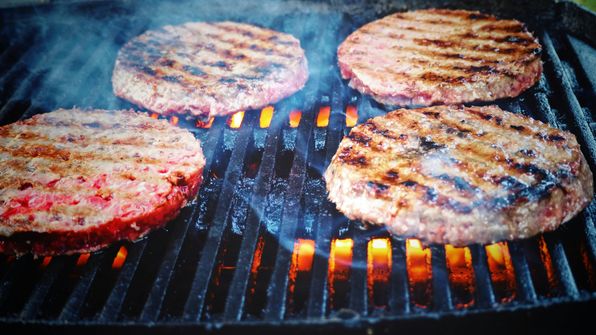
Social Success on the Carnivore Diet: Tips for Staying Committed at Gatherings and Restaurants
Social gatherings often mean a spread of carb-heavy foods and tempting desserts that can make sticking to the carnivore diet feel tricky. But with a b...

If you’re a woman living with gout, you know how frustrating those sudden, sharp attacks of pain can be. Gout is a type of arthritis that often hits without warning, especially in the joints of the big toe, but it can also target other areas like your ankles, knees, and fingers. While medications are essential, what you eat can play a huge role in managing your symptoms and keeping those painful flare-ups at bay.
In 2024, we’re learning more about how specific diets can help women with gout manage their symptoms more effectively. By choosing the right foods, you can lower your uric acid levels and keep your joints happy and pain-free. Let’s dive into some of the best dietary strategies that can help you live more comfortably with gout.

Gout happens when uric acid builds up in your blood and forms sharp crystals in your joints, leading to inflammation and pain. Certain foods can increase uric acid levels, while others can help lower them. Making smart food choices is one of the most effective ways to manage gout and prevent painful attacks.
Keeping a healthy weight is also important. Extra pounds can increase uric acid production and put more strain on your joints. According to the National Kidney Foundation, about 4% of adults in the United States have gout, and the prevalence is increasing, especially among women. A diet that focuses on low-purine foods, plenty of hydration, and the right nutrients can make a big difference in how you feel every day.
Here are some fresh and effective diets that can help keep gout flare-ups in check, based on the latest research and expert advice.
If there’s one diet that’s tailor-made for gout, it’s the low-purine diet. This eating plan is all about cutting back on foods that can increase uric acid levels.
Why It Works: Purines are substances found in many foods that your body breaks down into uric acid. When you eat a lot of high-purine foods, it can cause uric acid to build up and lead to gout attacks. A study published in the Best Practice & Research: Clinical Rheumatology found that people who followed a low-purine diet had fewer gout flare-ups and lower uric acid levels. Specifically, reducing purine intake can lower uric acid production by up to 35% in some cases, significantly reducing the risk of painful gout attacks.
Try This: Fill your plate with low-purine options like fruits, vegetables, whole grains, and low-fat dairy. Choose lean proteins like chicken, turkey, and tofu, and avoid high-purine foods like red meat, organ meats, shellfish, and oily fish like sardines and mackerel. According to the Current Opinion in Rheumatology, these dietary changes can make a noticeable difference in reducing gout symptoms.
You might know the DASH diet for its heart-healthy benefits, but did you know it’s also great for managing gout? This diet is packed with fruits, veggies, whole grains, and low-fat dairy—all good news for those trying to avoid gout flare-ups.
Why It Works: The DASH diet is full of foods that help lower blood pressure and reduce inflammation, which can be super helpful for managing gout. It also limits foods that are high in purines and sugary drinks that can raise uric acid levels. A study in the BMJ found that people who followed the DASH diet had lower uric acid levels and fewer gout attacks compared to those eating a typical Western diet. In fact, those on the DASH diet experienced a reduction in uric acid levels by an average of 1.3 mg/dL, which is significant for preventing gout flare-ups.
Try This: Stock up on colorful fruits and veggies, whole grains like brown rice and quinoa, and lean proteins like chicken, turkey, and fish. Enjoy low-fat dairy products like yogurt and milk, and steer clear of red meat, sugary snacks, and sodas. According to the Harvard School, following a DASH-style diet can improve overall health and reduce the risk of gout attacks.
Yes, you read that right—cherries! These delicious fruits aren’t just a tasty treat; they’re also a powerful weapon against gout.
Why It Works: Cherries are packed with antioxidants, specifically anthocyanins, which can help reduce uric acid levels and inflammation. Research in the Arthritis Foundation showed that eating cherries or drinking cherry juice can lower the risk of gout attacks by up to 35%. In the study, participants who consumed cherries over a two-day period had a 35% lower risk of gout attacks compared to those who did not eat cherries. Additionally, the risk was reduced by 45% when cherries were consumed in conjunction with gout medication.
Try This: Snack on fresh cherries or drink tart cherry juice daily. You can also add cherries to your morning yogurt, smoothies, or salads for a tasty and gout-friendly boost. Just make sure you choose natural, unsweetened cherry juice to avoid added sugars, which can increase uric acid levels. According to the Therapeutic Advances in Musculoskeletal Disease, cherries can be a natural and delicious way to help manage gout symptoms.

Vitamin C isn’t just great for your immune system—it’s also a game-changer when it comes to managing gout. This nutrient can help reduce uric acid levels and prevent gout flare-ups.
Why It Works: Vitamin C helps your kidneys excrete uric acid more efficiently, lowering its levels in your blood and reducing the risk of crystal formation in your joints. A study in the JAMA found that higher vitamin C intake was associated with a lower risk of gout. Specifically, for every 500 mg increase in vitamin C intake, the risk of developing gout was reduced by 17%. By focusing on foods rich in vitamin C, you can help keep gout at bay.
Try This: Add more vitamin C-rich foods to your diet, like oranges, strawberries, bell peppers, broccoli, and kiwi. You can also consider taking a vitamin C supplement, but make sure to consult with your doctor before starting any new supplements, as excessive vitamin C can sometimes cause kidney stones in susceptible individuals.
Staying well-hydrated is crucial for managing gout, as proper hydration helps flush out excess uric acid from the body and prevents the formation of painful crystals.
Why It Works: Drinking plenty of water helps dilute uric acid in the blood and promotes its excretion through the kidneys, reducing the risk of gout attacks. A study in the American Journal of Lifestyle Medicine found that staying hydrated significantly lowers uric acid levels and decreases the frequency of gout flare-ups. Participants who drank five to eight glasses of water a day had a 40% lower risk of gout attacks compared to those who drank only one glass a day.
Try This: Aim for at least 8-10 glasses of water per day, and more if you’re experiencing a gout attack or are physically active. Include hydrating foods like cucumbers, watermelon, and citrus fruits in your diet, and avoid sugary beverages and alcohol, which can dehydrate you and raise uric acid levels. According to the CDC, proper hydration is key to managing gout and preventing attacks.
Here’s a quick guide on what to eat and what to skip when managing gout:
A: While diet is a key part of managing gout, it isn’t a cure-all. It should be combined with other treatments and lifestyle changes recommended by your healthcare provider. A balanced diet can help lower uric acid levels and reduce the frequency and severity of gout attacks.
A: Focus on low-purine foods like fruits, vegetables, whole grains, low-fat dairy, and lean proteins like chicken and tofu. Staying hydrated with plenty of water and eating hydrating foods can also help flush out excess uric acid.
A: Not at all! You don’t need to cut out all protein—just be mindful of your choices. Opt for low-purine protein sources like chicken, turkey, tofu, and legumes, and limit high-purine proteins like red meat, organ meats, and shellfish.
A: It’s best to limit or avoid alcohol, especially beer and spirits, as they can increase uric acid levels and trigger gout attacks. If you choose to drink, do so in moderation and consult your doctor for personalized advice.
A: Staying hydrated is really important for managing gout. Drinking plenty of water helps flush out excess uric acid and reduce the risk of gout attacks. Aim for at least 8-10 glasses of water per day, and more if you’re active or having a flare-up.
A: Some supplements, like vitamin C, may help lower uric acid levels. However, always check with your doctor before starting any new supplements, as they can interact with medications and other health conditions.
A: Yes, exercise can help manage weight and improve overall health, which is important for managing gout. However, it’s best to avoid high-impact activities during a gout flare-up. Stick to low-impact exercises like walking, swimming, or cycling when your symptoms are under control.
Living with gout can be challenging, but by making smart dietary choices, you can manage your symptoms and reduce the frequency of painful attacks. Whether it’s embracing a low-purine diet, enjoying cherries, boosting your vitamin C intake, or simply staying hydrated, the right nutrition can make a big difference. Remember, everyone’s experience with gout is different, so find what works best for you and consult your healthcare provider for personalized advice.

Social gatherings often mean a spread of carb-heavy foods and tempting desserts that can make sticking to the carnivore diet feel tricky. But with a b...

The carnivore diet is often seen as straightforward: eat meat, keep it simple. But adapting it seasonally can bring freshness, variety, and local flav...

The carnivore diet has become increasingly popular, but like any extreme dietary approach, it raises important questions—especially for women concerne...

The carnivore diet has gained attention globally, but women’s experiences and cultural approaches to animal-based eating vary widely depending on wher...

Living with Chronic Obstructive Pulmonary Disease (COPD) can make everyday activities feel like a marathon, especially for women who are juggling heal...